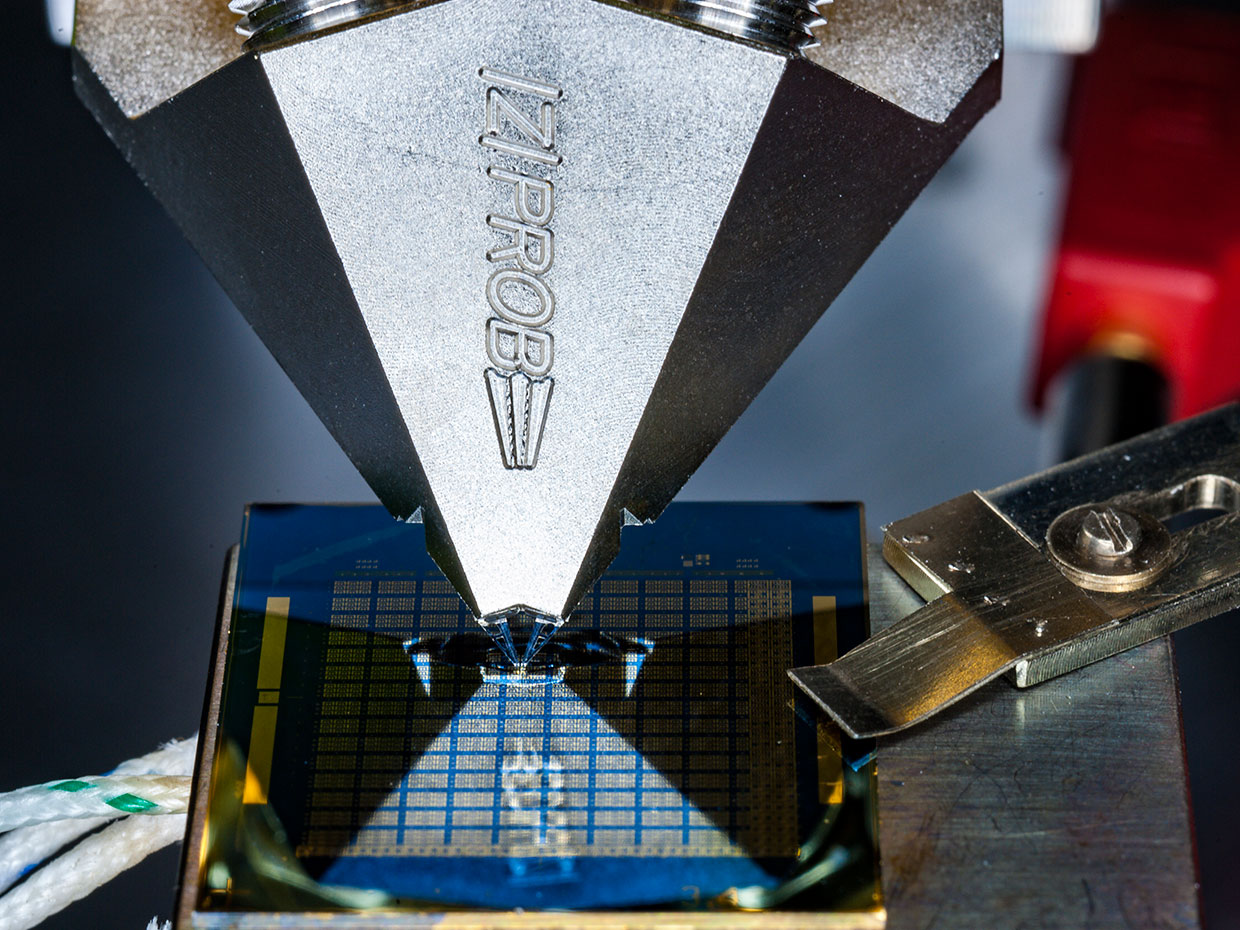IBM showed 8-bit analog phase memory chip
- Transfer
The researchers used the chip to test a simple neural network that managed to determine the numbers with 100% accuracy.

At the beginning of December 2018, at the IEEE International Electron Devices Meeting in San Francisco, IBM revealed a new 8-bit analog chip. However, the main innovation was not the fact that analog chips are catching up with their digital counterparts, but a radical rethinking of the architecture. This chip was the first chip that made 8-bit calculations in the same place where the information is stored.
In the traditional von Neumann computer architecture, data is constantly transferred between the memory and the processor, which consumes a lot of valuable energy and time, says Abu Sebastian, the main investigator in this paper from IMB Zurich. Memory counts are the next logical step in reducing energy consumption and increasing speed. And this is necessary in order for the equipment to keep pace with advances in artificial intelligence.
The new IBM analog chip is based on phase state memory . Its key ingredient is a material capable of changing phase in response to an electrical current. These are usually alloys of germanium, tellurium, and antimony. In one of the conducting phases, the atoms are aligned exactly. In another phase, not conducting current, the atoms move, heated by the current, and mixed.
Material that changes phase, being between two electrodes, does not completely switch between ordered and chaotic states, which would correspond to switching between zero and one. Instead, at each instant there is a mixture of both states. The total resistance of the material is determined by the size of the areas with mixed atoms.
“We encode information through the arrangement of atoms,” says Sebastian. For example, weights in a neural network can be stored and accessed as the resistance of a variable-phase device.
However, these resistances float and fluctuate. Since the current passes through the material while reading the information, the mixed sections vary slightly with time each time - and this limited the accuracy and practical use of such devices.
To get around this problem, researchers from IBM introduced a so-called phase change into the device. projecting segment. It was first offereduse in 2015, with the same team doing it. This is a conductive layer of metal nitride, wrapped around the center of the phase-changing material and running parallel to its electrodes, between them. He shares the processes of reading and writing information.
A projecting segment does nothing at the time of recording. All current passes through the phase changing material and adjusts the mixed sections. But when the information is read, the current passes through the projecting segment, bypassing the mixed sections, they remain intact and protect the information stored in them. “This is a key innovation,” says Sebastian.
The researchers tested a single-layer network on an 8-bit chip, consisting of 30 phase-changing devices, to recognize the images of numbers 1, 0 and 4, and reached 100% accuracy. And although this is still a preliminary analysis, Sebastian estimates that such a breakthrough can reduce the energy consumption of future devices by 100–1000 times compared with traditional computer systems.
In traditional calculations, accuracy was valued, and in the field of artificial intelligence, the opposite trend is observed. IBM also spoke about a digital chip that works with 8 bits and maintains accuracy when training neural networks. This brings the model closer to how the human brain works, capable of making the right conclusions with a lack of information.
IBM Vice President of Research, Jeff Welser, compares this to the situation in which you look through a blurred window and see the blurred silhouette of a person coming to your house. “As soon as you realize that this is your mother, the accuracy of the image will no longer matter,” says Velzer. “You will have the right information.”
